Table of Contents
The world's largest construction projects demonstrate exceptional engineering prowess, innovation, and collaborative effort, resulting in groundbreaking architecture and infrastructure. Major multinational corporations and government initiatives often fund these projects.
The largest construction projects in the world includes, NEOM, The Gulf Railway, ISS, King Abdullah Economic City, California High-Speed Railway, Jubail II, South-North Water Transfer Project, Chuo Shinkansen (Maglev Line), Al Maktoum International Airport Expansion and Three Gorges Dam.
Furthermore, some of the largest construction projects in recent times have solved some critical global challenges, pushing the boundaries of human capability. Let us take a look at some of the largest construction projects in human history. The table below gives you a list of largest construction projects in the world and ranks it according to construction cost.
List of Top 10 Largest Construction projects in the World (2025)
Project Name | Location | Construction Cost | Project Stage |
NEOM | Saudi Arabia | USD 500 billion | Under Construction |
The Gulf Railway | Saudi Arabia, Kuwait, Bahrain, Qatar, the United Arab Emirates (UAE), and Oman | USD 250 billion | Planning/Under Construction |
International Space Station | Space | USD 150 billion | Operational |
King Abdullah Economic City | Saudi Arabia | USD 100 billion | Under Construction |
California High-Speed Railway | California | USD 89 billion - 128 billion | Under Construction |
Jubail II | Saudi Arabia | USD 80 billion | Under Construction |
South-North Water Transfer Project | China | USD 62 billion | Under Construction |
Chuo Shinkansen (Maglev Line) | Japan | USD 52 billion | Under Construction |
Al Maktoum International Airport Expansion | Dubai | USD 35 billion | Under Construction |
Three Gorges Dam | China | USD 25 billion | Operational |
NEOM
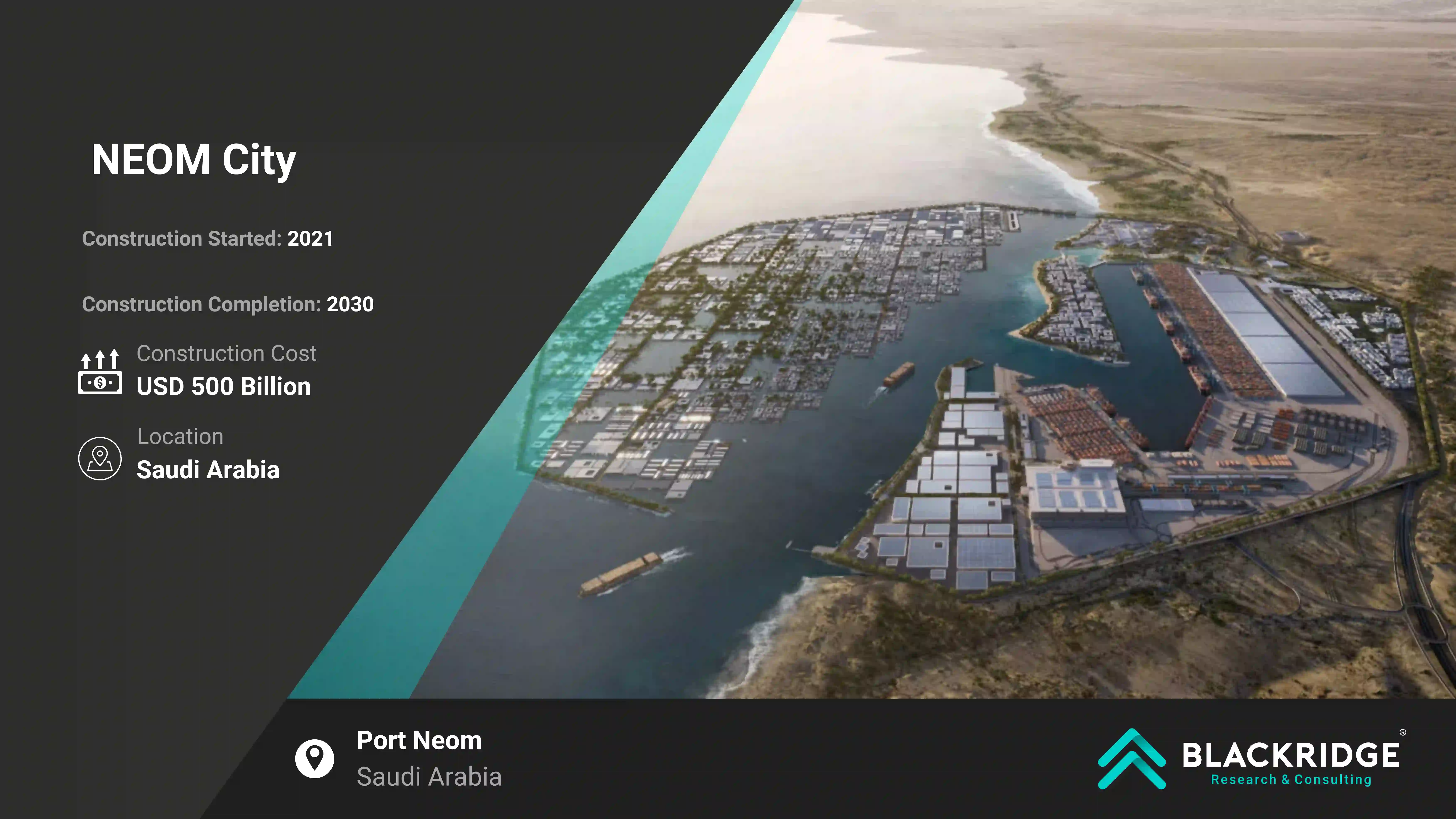
NEOM is a mega smart city project in Tabuk province in northwest Saudi Arabia. The name NEOM combines the Ancient Greek prefix 'neo' meaning 'new,' with the first letter of 'Mustaqbal,' the Arabic word for 'future' Hence, the combination creates the meaning ‘new future’. The project will cover 26,500 square kilometers and include 468 kilometers of coastline along the Red Sea and the Gulf of Aqaba.
NEOM, the biggest construction project in the world right now, is part of the Saudi Vision 2030 strategy to reduce dependency on oil and diversify the economy. Furthermore, to deviate from the oil economy NEOM is also investing in green hydrogen. NEOM's unique location will improve livability while preserving 95% of the surrounding natural landscape. NEOM is a unique investment opportunity unparalleled anywhere else. This project is part of the Saudi Giga Project initiative. The overall cost of the project is around USD 500 billion.
As of May 2025, the developers of the NEOM mega project have completed excavation of the B3 Tunnel at the Trojena ski resort. The 680-meter tunnel now links the Lake Access Road to the Vault, a striking vertical village integrated into the mountainside.
Perched on Jebel al Lawz at over 8,500 feet, Trojena (part of NEOM) continues to take shape with ski slopes, luxury hotels, and a 15-billion-gallon man-made lake.
The Gulf Railway
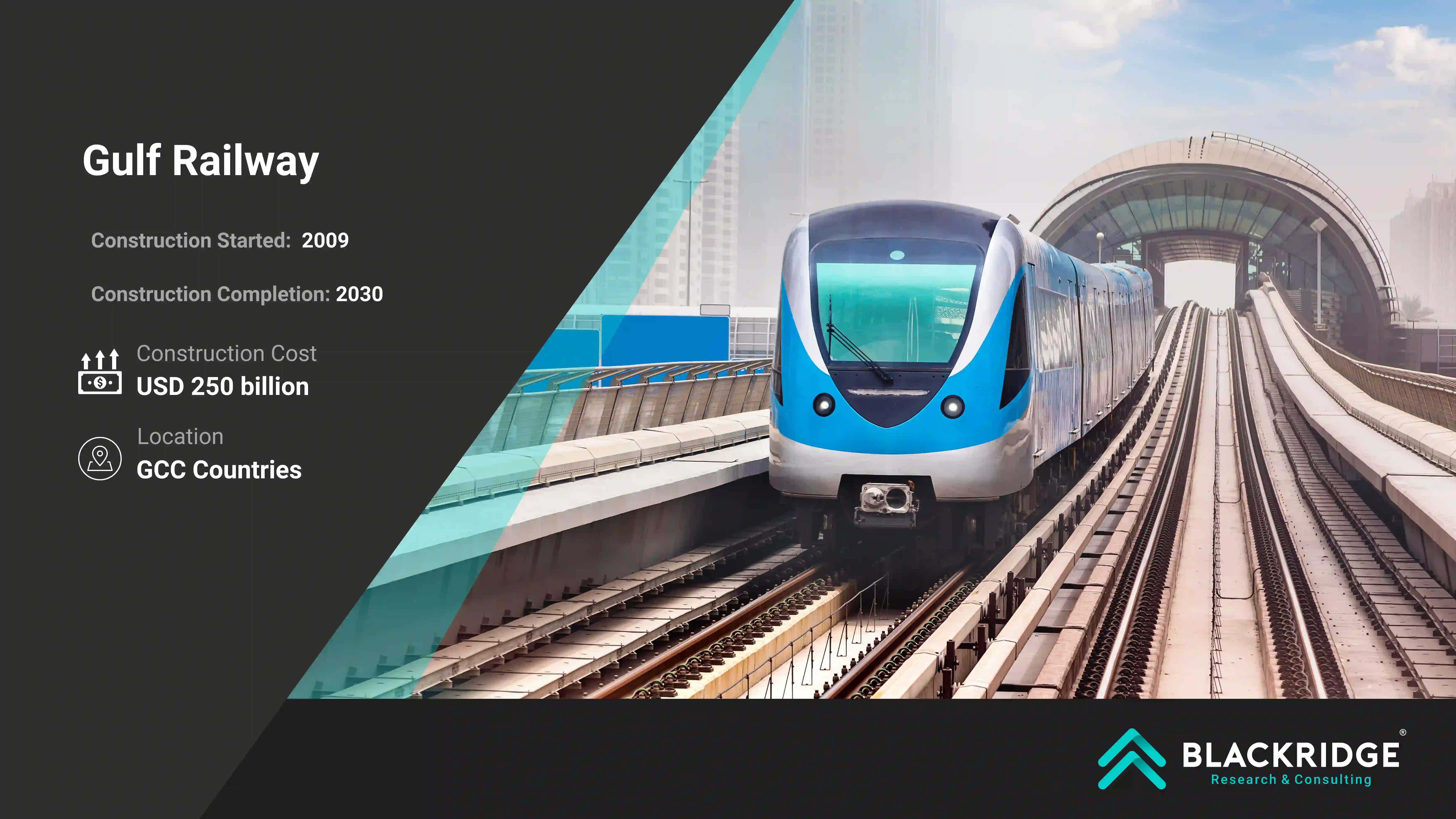
The Gulf Railway, one of the big construction projects in the world, will link all six member states of the Gulf Cooperation Council (GCC) - Saudi Arabia, Kuwait, Bahrain, Qatar, the United Arab Emirates (UAE), and Oman, spanning 1,353 miles (2,177 km) overall in the Persian Gulf. The goal of Gulf Railway is to design, build, and manage a railway network linking Sohar to the UAE's national railway network as part of the Gulf railway network.
The development of regional railroads in recent years points to GCC Rail starting to take form. The Rail will use sustainable transportation options to boost economic growth, reduce carbon emissions, and increase regional connections over an estimated 2,000 kilometers.
Phase 1 - The first phase of the project is completed in 2023, the route from Saudi Arabia through the United Arab Emirates and Oman.
Phase 2: It will be completed by 2025, which will connect Saudi Arabia, Kuwait, and Bahrain.
The estimated volume and flow of people and cargo on the GCC railway project will surpass 8 million by 2045, and the number of products scheduled to be moved by this project will reach 95 million tons by 2045. The anticipated total cost of this project is approximately USD 250 billion.
In April 2025, the GCC Railway project advanced with Kuwait signing an USD 8 million design contract with Turkish firm Proyapi for its segment of the 2,177-km regional rail network. This marks a key step toward linking all six Gulf Cooperation Council countries by 2030.
In parallel, Saudi Arabia Railways has issued a tender for the USD 7 billion Saudi Landbridge, a separate project that will connect Riyadh and Jeddah with 900 kilometers of new track increasing connectivity.
International Space Station
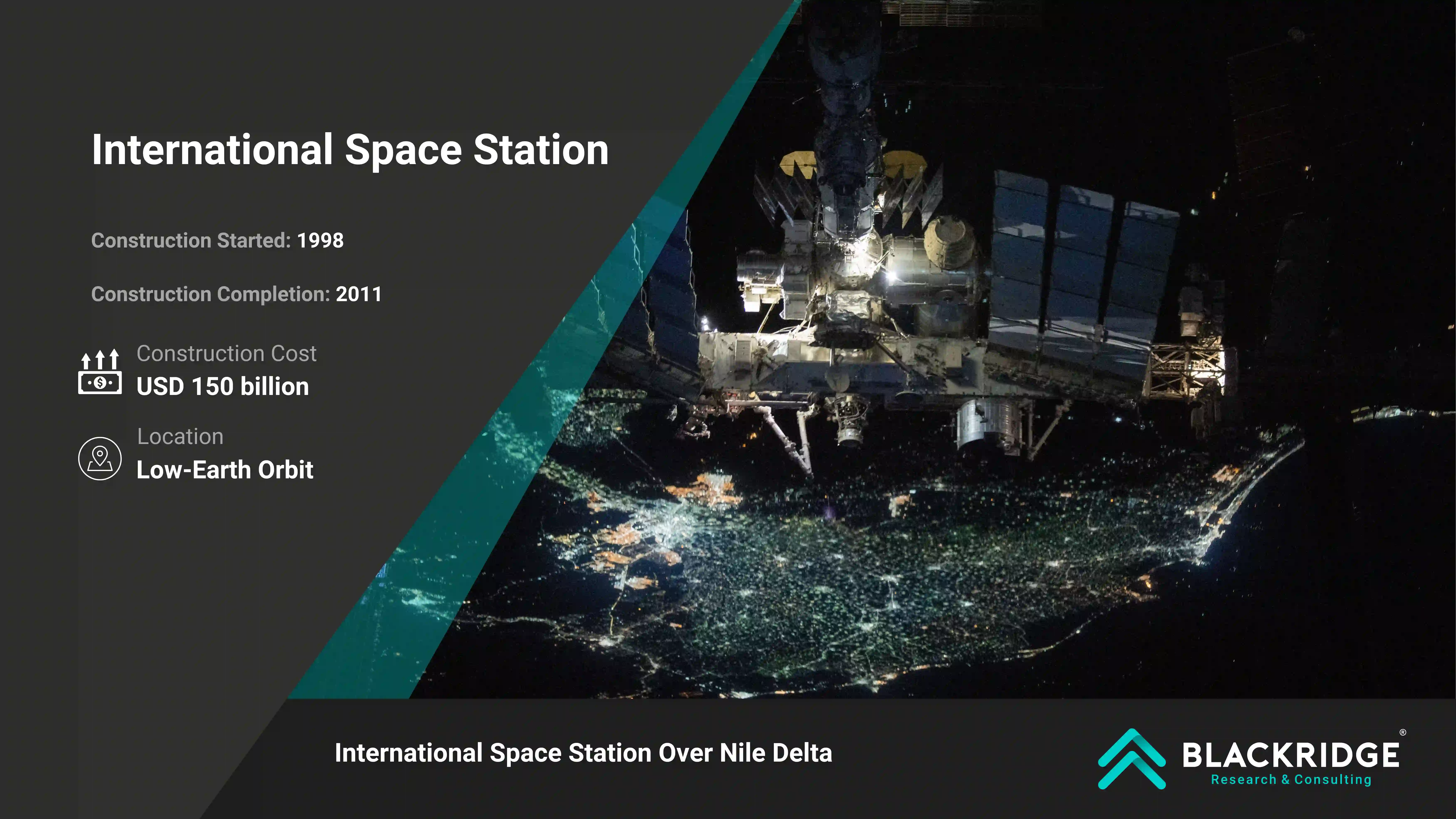
The International Space Station (ISS) is the largest orbiting laboratory ever built. The five international partners include the United States, Canada, Russia, Europe, and Japan space agencies. The ISS orbits between 370 and 460 kilometers (230–286 miles) above Earth’s surface. The first parts of the ISS were sent and assembled in orbit in 1998.
The ISS weighs around 420,000 kilograms, which is more than the weight of 330 cars. The Space station is 74 meters long and 110 meters wide. The total cost of this project is approximately USD 150 billion.
As of May 2025, NASA has confirmed that a specially modified SpaceX Dragon capsule will deorbit the International Space Station in 2030. NASA has also contracted companies like Axiom Space, Blue Origin, Northrup Grumman, and Starlab to develop commercial space stations.
Certification for at least one of these new platforms is expected in 2026, paving the way for a future where NASA becomes one of many clients in a privatized low Earth orbit economy.
King Abdullah Economic City
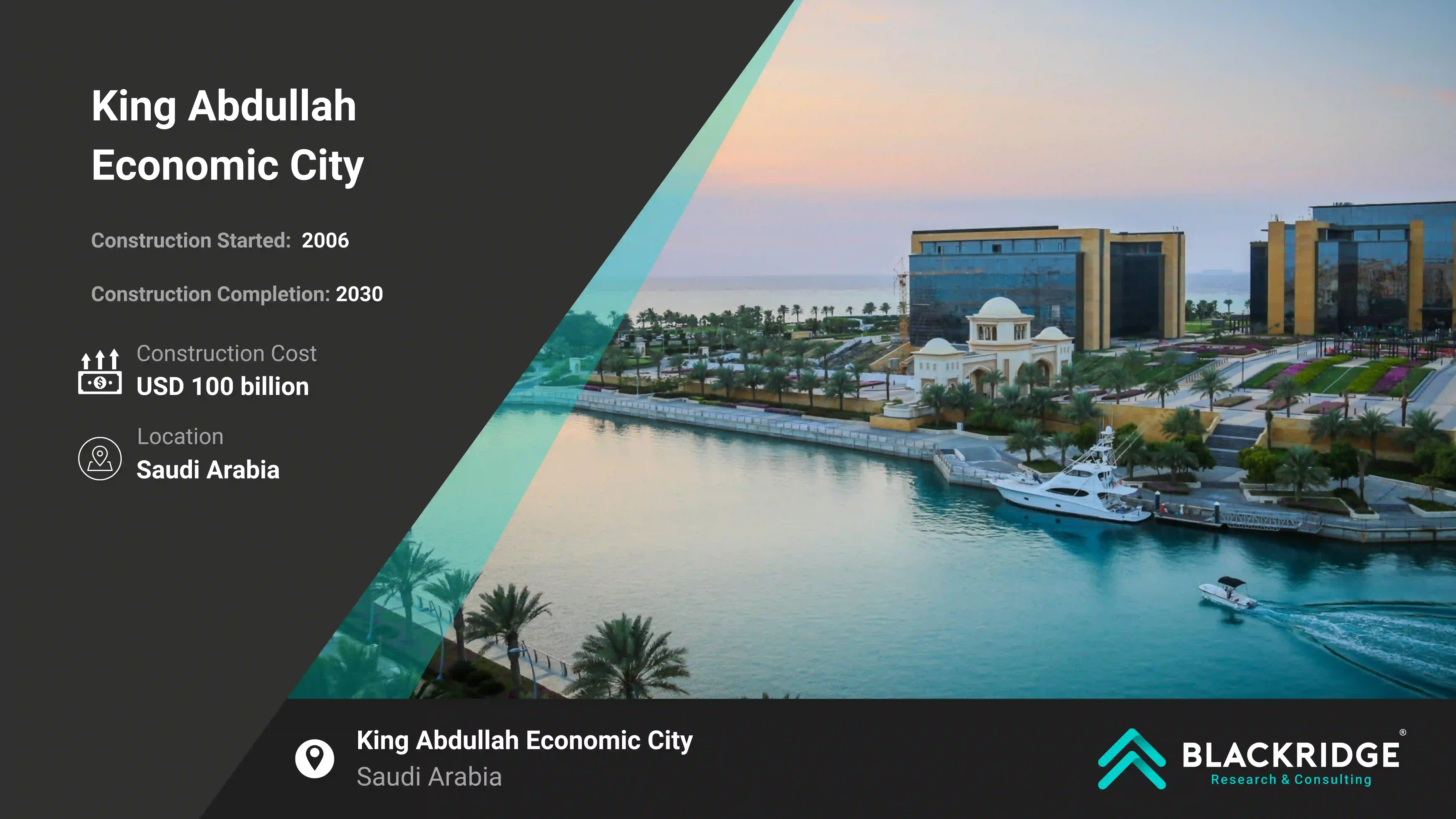
In 2005, Saudi Arabia unveiled plans for King Abdullah Economic City (KAEC), a futuristic megacity covering 173 square kilometers (67 square miles) on the Red Sea coast near Rabigh, 100 kilometers north of Jeddah. Founded by King Abdullah in 2006, the biggest infrastructure projects in the world aims to diversify the Saudi economy beyond oil and create one million jobs for the kingdom's growing youth population.
With a projected total cost of USD 100 billion and an estimated completion date of 2029, KAEC represents a significant investment in Saudi Arabia’s future. The development strategy began with a focus on infrastructure, ensuring KAEC's connectivity via road, rail, and sea. King Abdullah Port plays a crucial part as a strategic hub on European and Asian commercial routes.
The port facilitates trade between East and West, boasting over 30 deep-water berths, some exceeding 18 meters in depth. Furthermore, KAEC will be linked to the major cities of Jeddah, Medina, and Mecca. Complementing this infrastructure development are pro-business regulations designed to attract investment and foster economic growth within the city.
California High-Speed Railway
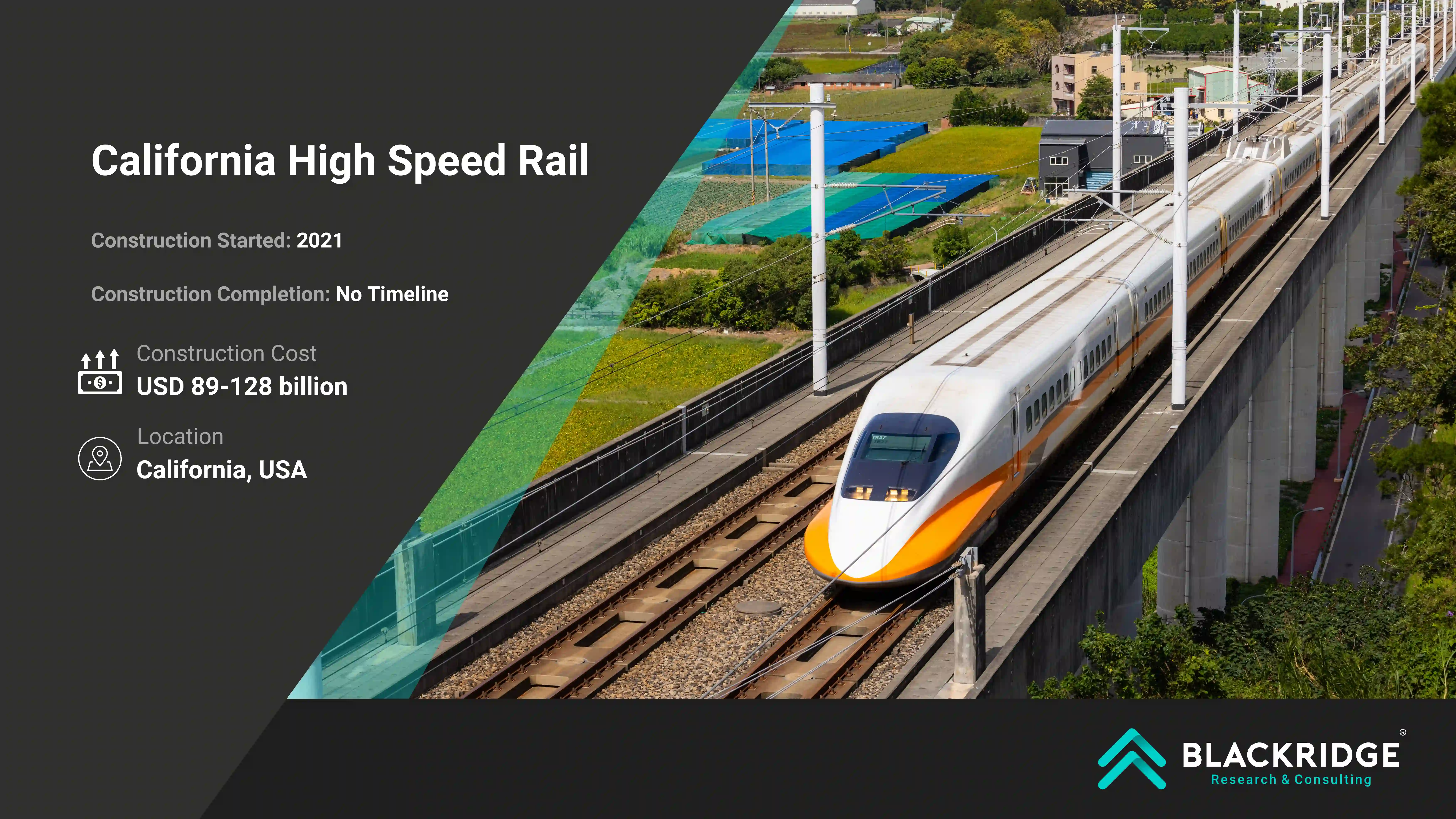
Construction on California high speed rail began in 2015 and is projected to conclude in 2029. This fully electric rail system, powered entirely by renewable energy, will connect eight of California's ten largest urban centers in the United States.
Stretching from San Diego in the south to San Francisco in the north. Designed to operate without government subsidies, the CHSR aims to link key cities in the Bay Area, Central Valley, and Southern California while reaching speeds of up to 200 miles per hour.
Phase 1 will connect Los Angeles and San Francisco.
Phase 2 will boost the connectivity of San Diego and Sacramento.
The train will be 100% electric and controlled completely by sustainable power, as one of the future mega projects in the world. It will be equipped for speeds up to 200 miles each hour. California's high-speed rail will link cleaner environments, create employment, and conserve agricultural and protected areas.
California’s high-speed rail project could secure a major funding boost under Governor Gavin Newsom’s revised 2026 budget proposal. The plan calls for extending the state’s cap-and-trade funding through 2045, ensuring a minimum of USD 1 billion annually for the project, potentially totaling nearly USD 20 billion over two decades.
Jubail II: Largest Industrial City on Earth
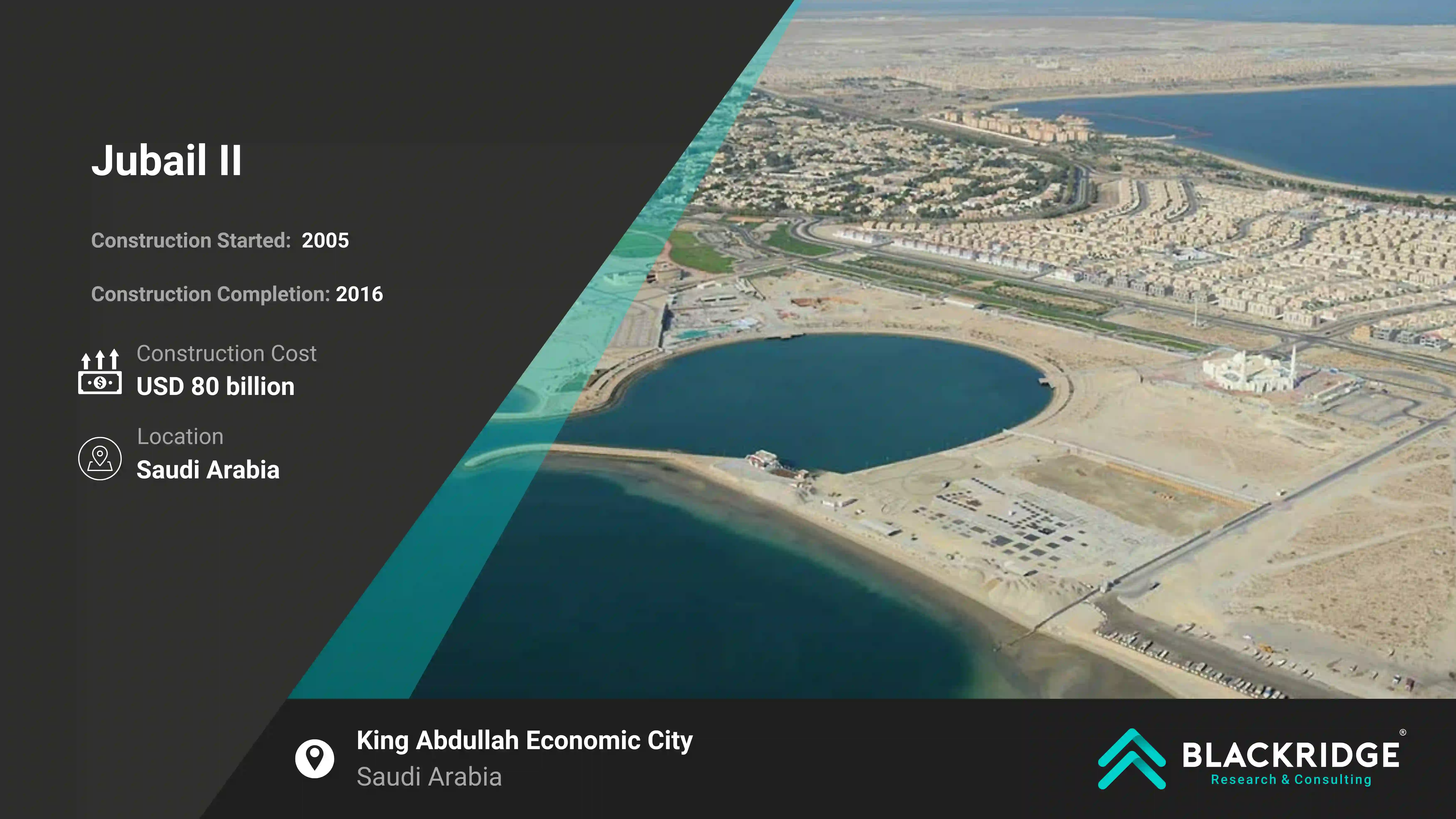
Jubail II is considered to be the world's largest civil engineering project. This multi-billion dollar Industrial project is being constructed in four phases over 22 years. Jubail Industrial II is designed to promote the development of the petrochemical industry. It also includes an extension to the area of Jubail Industrial City by 6200 hectares.
By 2035, the initiative hopes to make the region a global center for chemicals and energy, enhancing society and bolstering the petrochemical industry.
With investments in facilities for manufacturing ammonia, green hydrogen, carbon capture and storage, and petrochemicals, the project goes beyond sustainability. Jubail II included residential housing for 120,000 people, educational institutions, a "greenfield" university with 18,000 students, and roads, bridges, hospitals, power, water, and waste facilities.
Jubail and Dammam would be linked by a six-lane motorway. This roadway is considered as the project’s primary commercial region, as a result, all project components benefit from a robust and effective communication system. Few roads and trails have been built to connect the project to smaller towns and regions. The anticipated total cost of this project is approximately USD 80 billion.
South-North Water Transfer Project
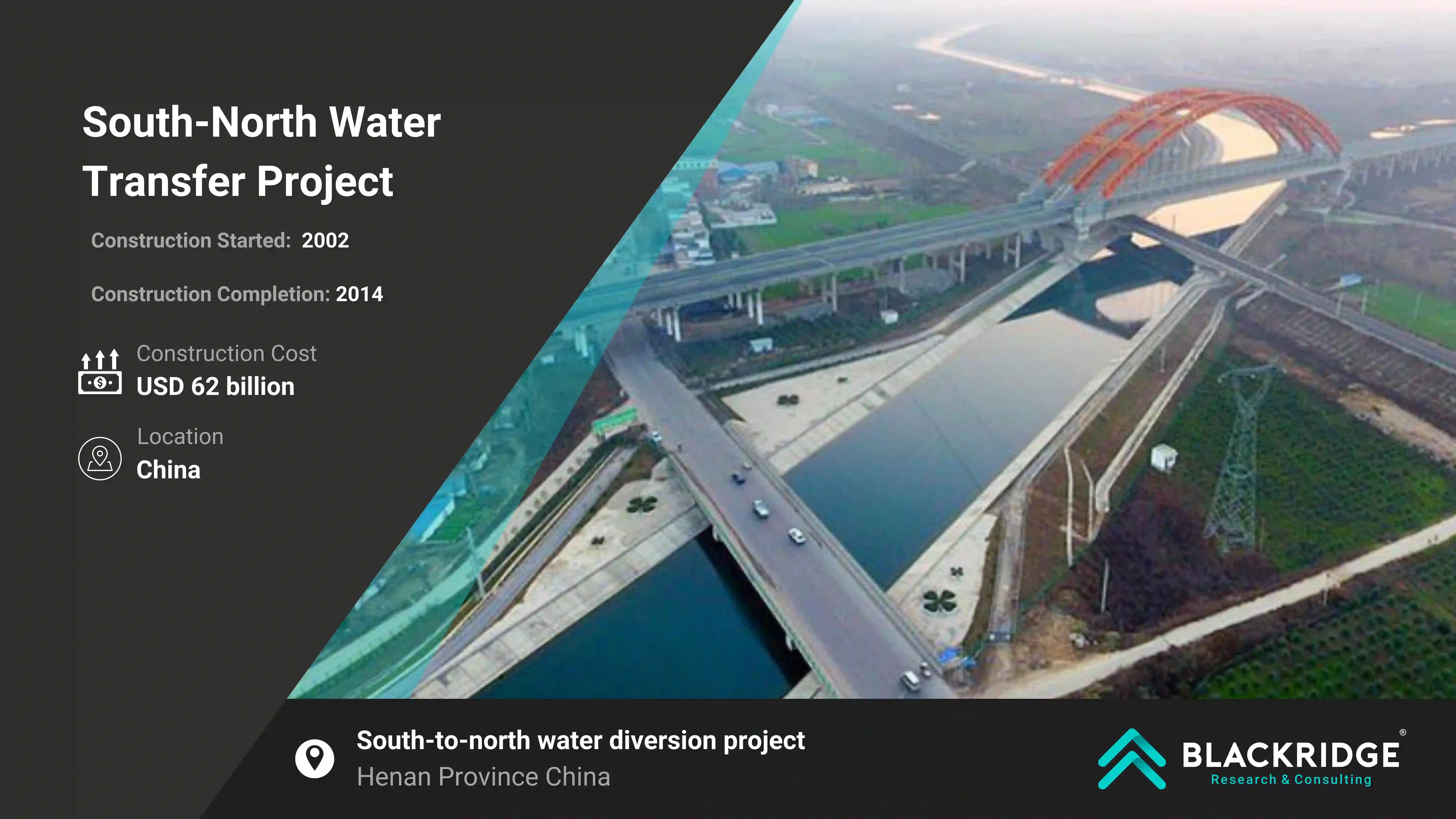
The aim of the South-North Water Transfer Project is to transfer large amounts of water from China's wet southern regions to the parched northern territories. This project, the largest of its kind, aims to alleviate the water scarcity in the north. It involves redirecting water from rivers in the south.
The water transfer project, which is a follow-up to China's South-to-North Water Diversion Project, began full-scale development recently. Construction of the central route began in December 2003.This project has already taken 50 years since the beginning of the company.
The core route of the South-to-North Water Diversion Project served more than 108 million people. It will eventually divert 44.8 billion cubic meters of water annually to the dryer northern population centers, which is planned to complete in 2050. The anticipated total cost of this project is approximately USD 62 billion.
Chuo Shinkansen (Maglev Line)
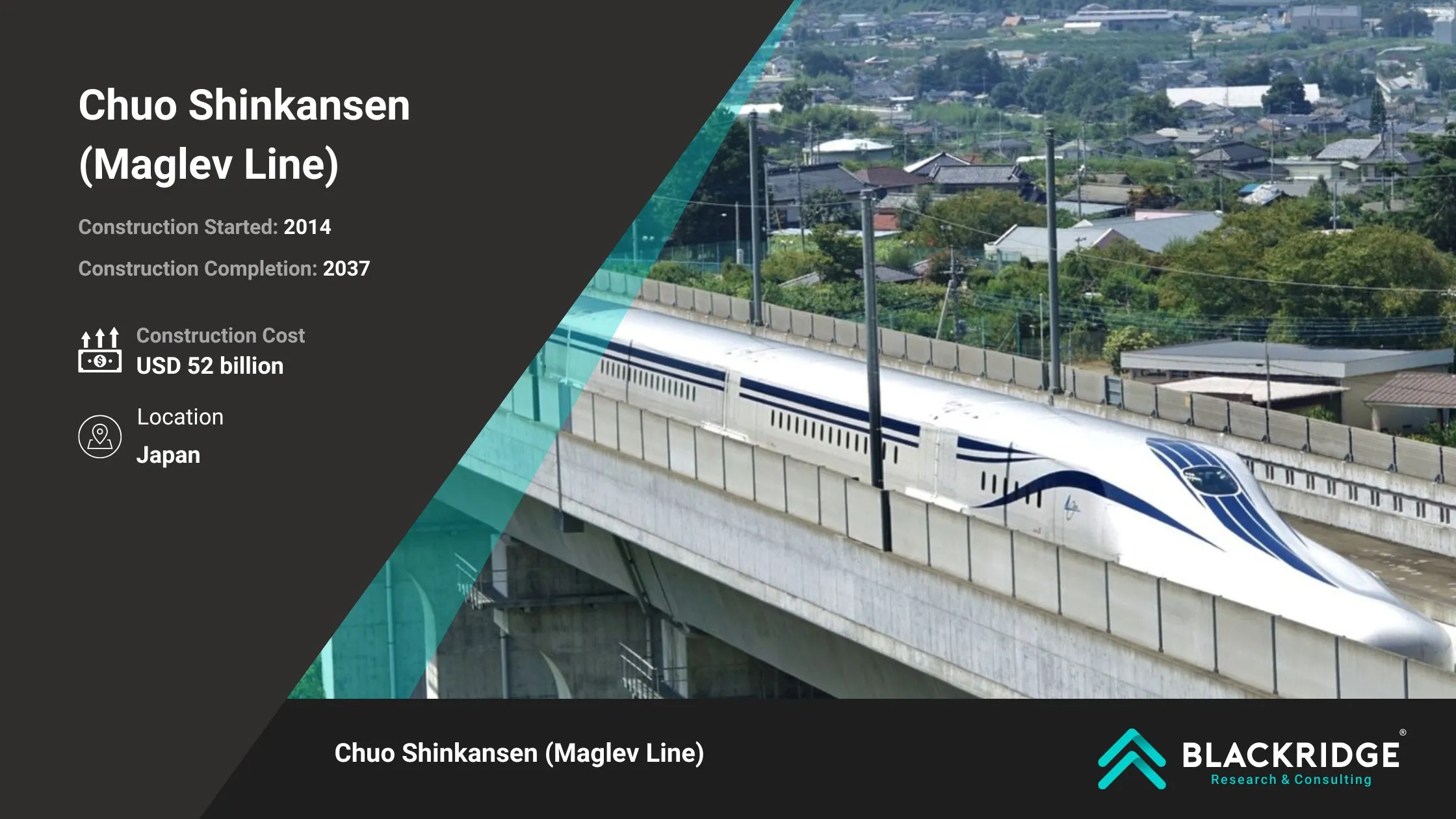
The Chuo Shinkansen is a revolutionary high-speed rail project in Japan that will utilize cutting-edge Superconducting Maglev (SCMAGLEV) technology to drastically reduce travel time between major cities. Developed by the Central Japan Railway Company, the line is designed to initially connect Tokyo and Nagoya in under 40 minutes, and eventually reach Osaka in approximately 67 minutes at speeds up to 314 mph (505 km/h).
The project builds upon decades of research, including the Yamanashi test track established in the 1970s, which set world speed records and demonstrated the potential of maglev transport. Once operational, the Chuo Shinkansen will be accessible with the Japan Rail Pass, like the current nine Shinkansen lines.
The first phase of the line between Tokyo (Shinagawa Station) and Nagoya is under construction and slated to open in 2027. Around 90% of this 286-kilometer stretch will run through tunnels or underground, including a 25-kilometer tunnel beneath the Japanese Alps, set to become the deepest in the country.
Additional stations are planned in Kanagawa, Yamanashi, Nagano, and Gifu prefectures, with confirmed tunneling efforts also in Yamanashi and Shizuoka expected to be completed by 2025.
Following the Tokyo–Nagoya phase, the extension to Osaka is scheduled to open by 2037. Originally planned for 2045, the timeline was accelerated with added government funding and environmental assessments to ensure a direct, high-speed route. Proposed stations in Mie and Nara Prefectures are under evaluation, and the final terminus will be at Shin-Osaka Station.
Expansion of Al Maktoum International Airport
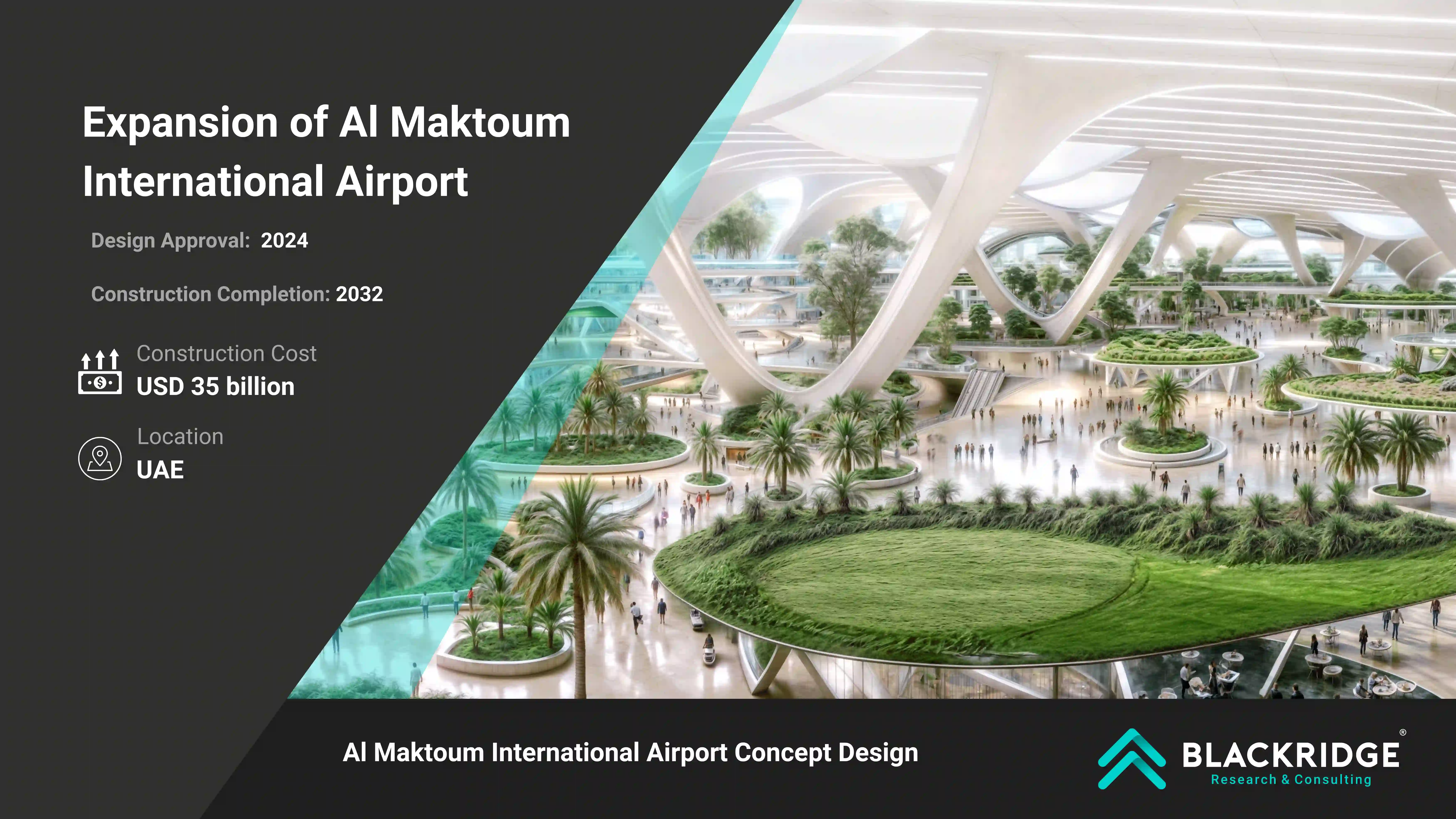
The Expansion project of Al Maktoum International Airport in Dubai is one of the largest construction projects in the world. The airport will become the largest airport in the world when it is built, according to urban planner and developer Dubai South, with a capacity of up to 255 million passengers per year and a larger passenger volume.
The project will be covered by 56 square kilometers. Discussions are underway to relaunch the project, which would significantly benefit Dubai’s economy. Dubai World Centre is Dubai's futuristic airport. The airport's expected annual passengers and freight is between 160 million and 260 million, or 12 million long tons and 13 million short tons.
The airport is a key component of Dubai South, a planned residential, commercial, and logistical complex. The anticipated total cost of this project is approximately USD 33 billion.
Dubai has entered a major new phase in its aviation strategy with the planned closure of Dubai International Airport (DXB) by 2035. The transition will shift operations to the rapidly expanding Al Maktoum International Airport (DWC), part of a USD 35 billion investment to future-proof the UAE’s air travel and logistics infrastructure.
With DXB handling over 92 million passengers in 2024, the move underscores Dubai’s ambition to remain a global aviation hub. Recent developments include a AED 1 billion (USD 272 million) contract awarded to Binladin Contracting Group, largest construction company in Saudi Arabia, for a second runway at DWC, along with a AED 75 million enabling works package marking a clear transition from planning to active construction.
Three Gorges Dam
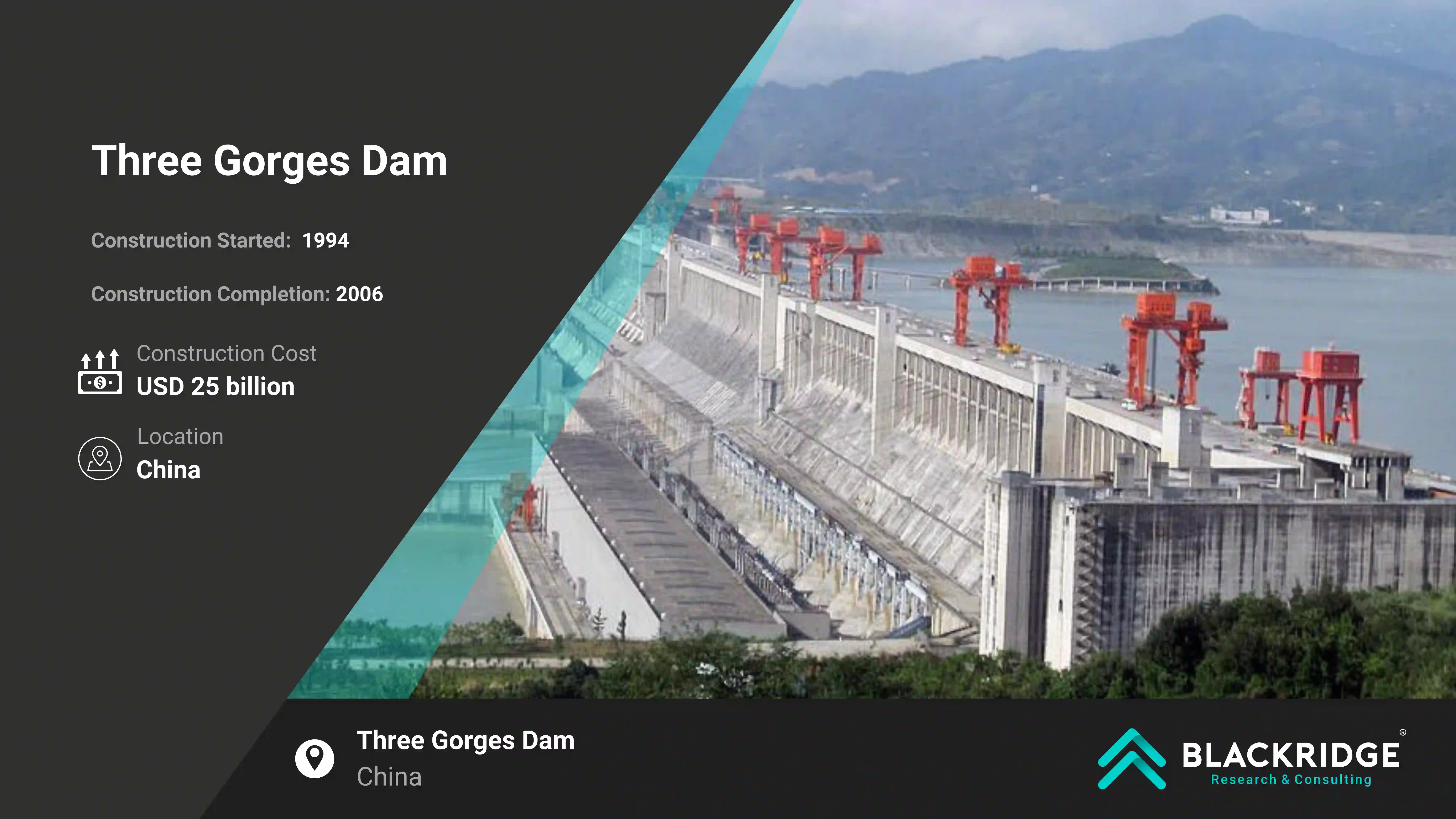
The Three Gorges Dam has produced over 20,000 MW of electric power, enough to sustain the Chinese economy, and has become the largest hydropower project in the world. The Dam is so big that due to the moment of inertia caused by holding back large amounts of water, it slowed down the earth's rotation by 0.06 microseconds. It is one of the largest construction projects in China.
The idea for the Three Gorges Dam was first considered by Chinese Nationalist Party leaders in 1919. In 1953, Chinese leader Mao Zedong ordered a feasibility assessment for the construction project. Subsequently, with a total cost of USD 25 billion, construction began in 1994 and was completed in 2003. The Three Gorges Dam stretches more than two kilometers (2,335 meters) across one of the greatest rivers in the world, the Yangtze.
The Three Gorges Dam is a straight-crested gravity dam that is 185 meters high. Furthermore, the construction involved the usage of 28 million cubic meters of concrete and 463,000 metric tonnes of steel. The thirty-plus massive turbine generators that cross the Yangtze River ensure a reliable supply of electricity, ensuring the economy's sustainability in the long run.
Also Read: Top 20 Largest Construction Companies in the World
Be the first to know exclusive details about the Upcoming Largest Construction Projects in the World
Subscribe to our Global Construction Industry database and unlock:
Comprehensive project details on planned, upcoming, ongoing, and commissioned initiatives
Timely updates on tenders and new developments
Access to key stakeholders and decision-makers
Market insights and future trend analysis by experts
Book a free demo today for latest updates on construction projects around the world!
Frequently Asked Questions
What is the biggest industrial site in the world?
Jubail Industrial City is the biggest industrial site in the world was established in 1975 and is located in the Eastern Province Saudi Arabia covering 1,016 square kilometers. Jubail Industrial II is under construction.
Which country is no. 1 in construction?
China is the leading construction nation with over 1,175 infrastructure projects, contributing 25.4% of the value of the worldwide construction industry.
Which is the biggest construction company in the world?
China State Construction Engineering Corporation (CSCEC) is one of the largest construction companies in the world and has the highest construction business revenue in the world. CSCEC provides engineering services for buildings and industrial plants.
What is the largest industrial building in the world?
Washington's Boeing Everett Factory With a total interior capacity of 472 million cubic feet (13.3 million cubic meters), it was first built in 1967 and is now the biggest industrial structure in the world. It can hold as many people as 13 Wimbledon Stadiums.




![Top Construction Management Firms in Germany [2025]](https://images.blackridgeresearch.com/zA7C1E09-z4Uj64Eb0zfkw/6326073e-3a82-47c2-6a45-b14d04669200/public)


Leave a Comment
We love hearing from our readers and value your feedback. If you have any questions or comments about our content, feel free to leave a comment below.
We read every comment and do our best to respond to them all.